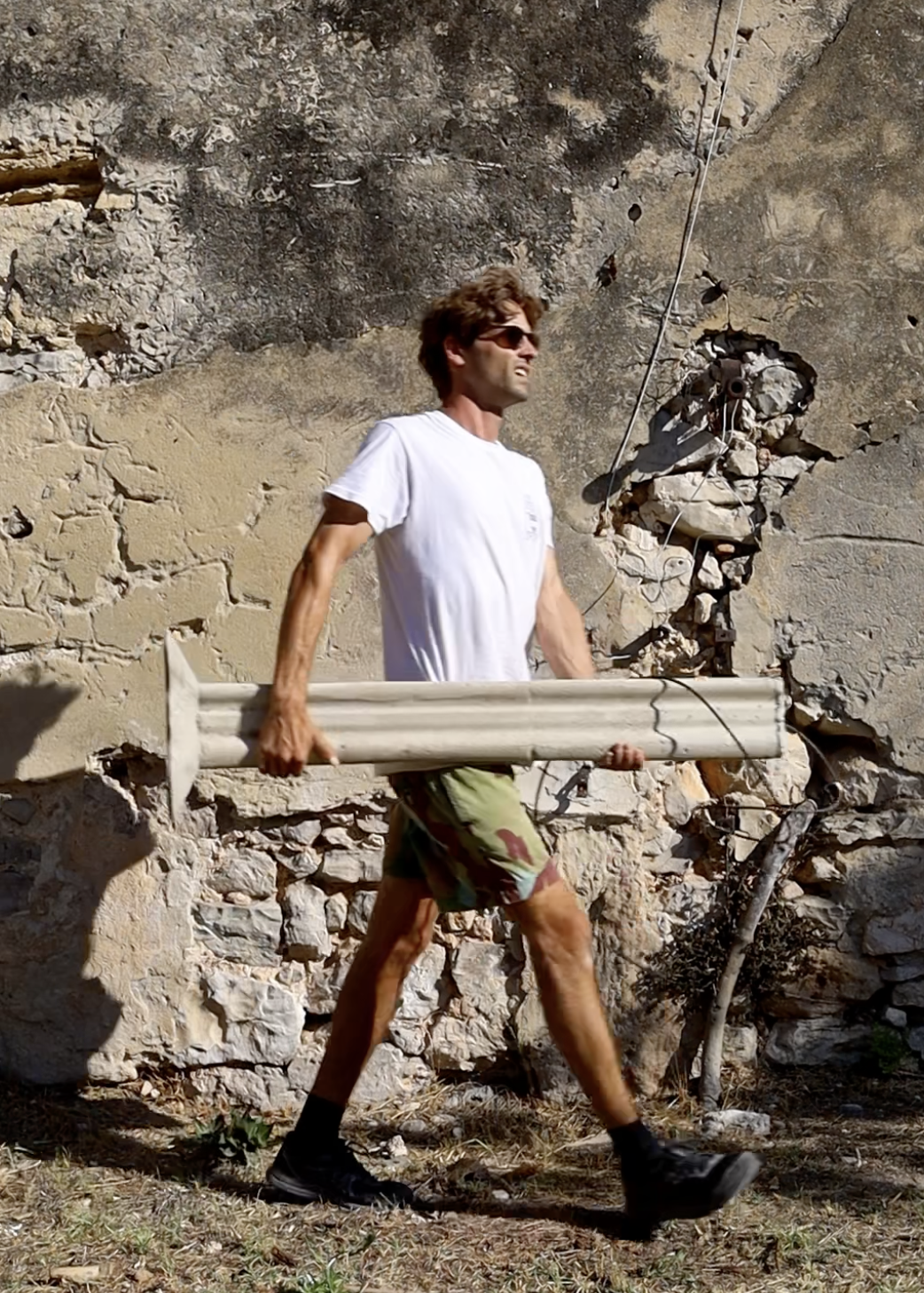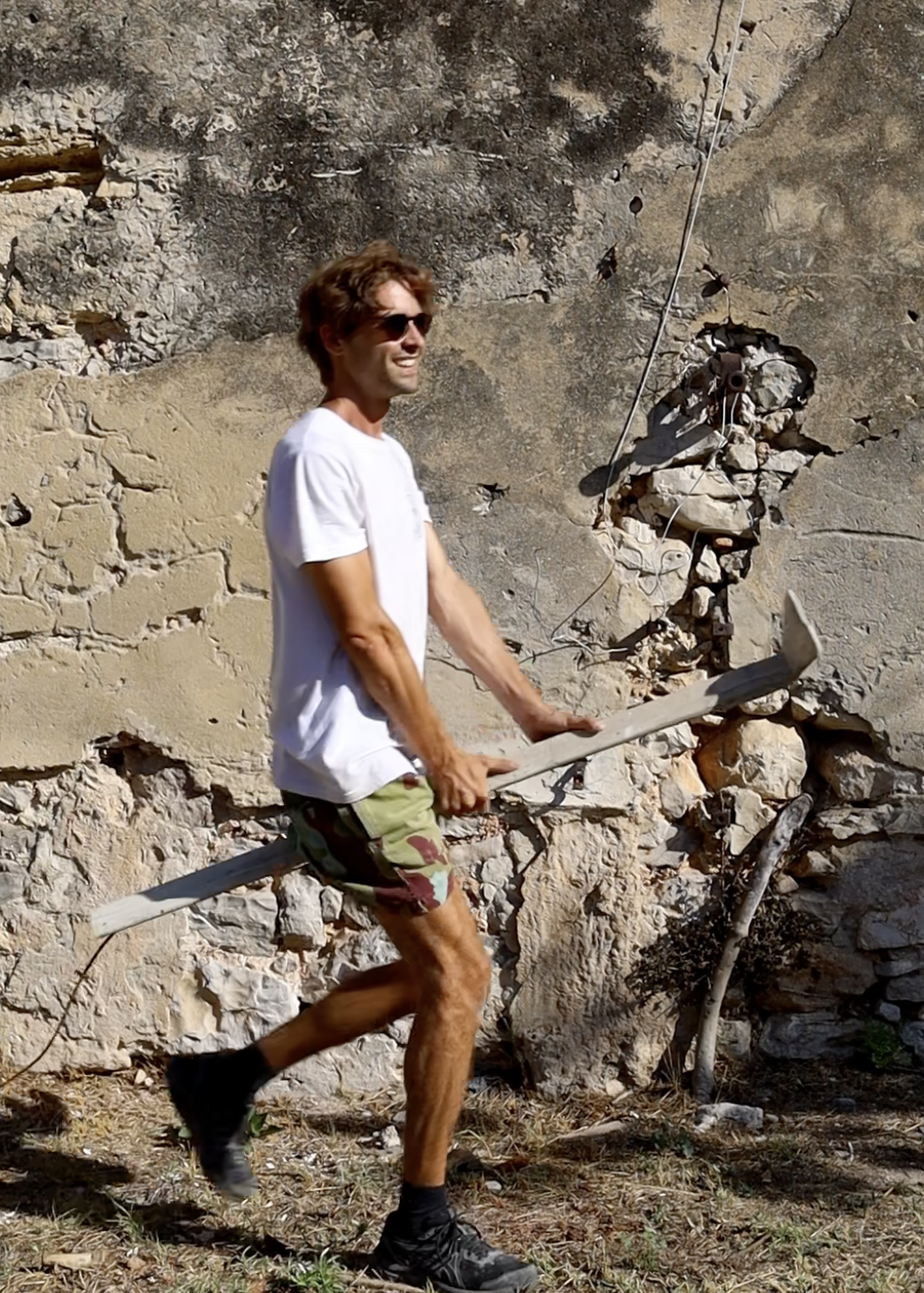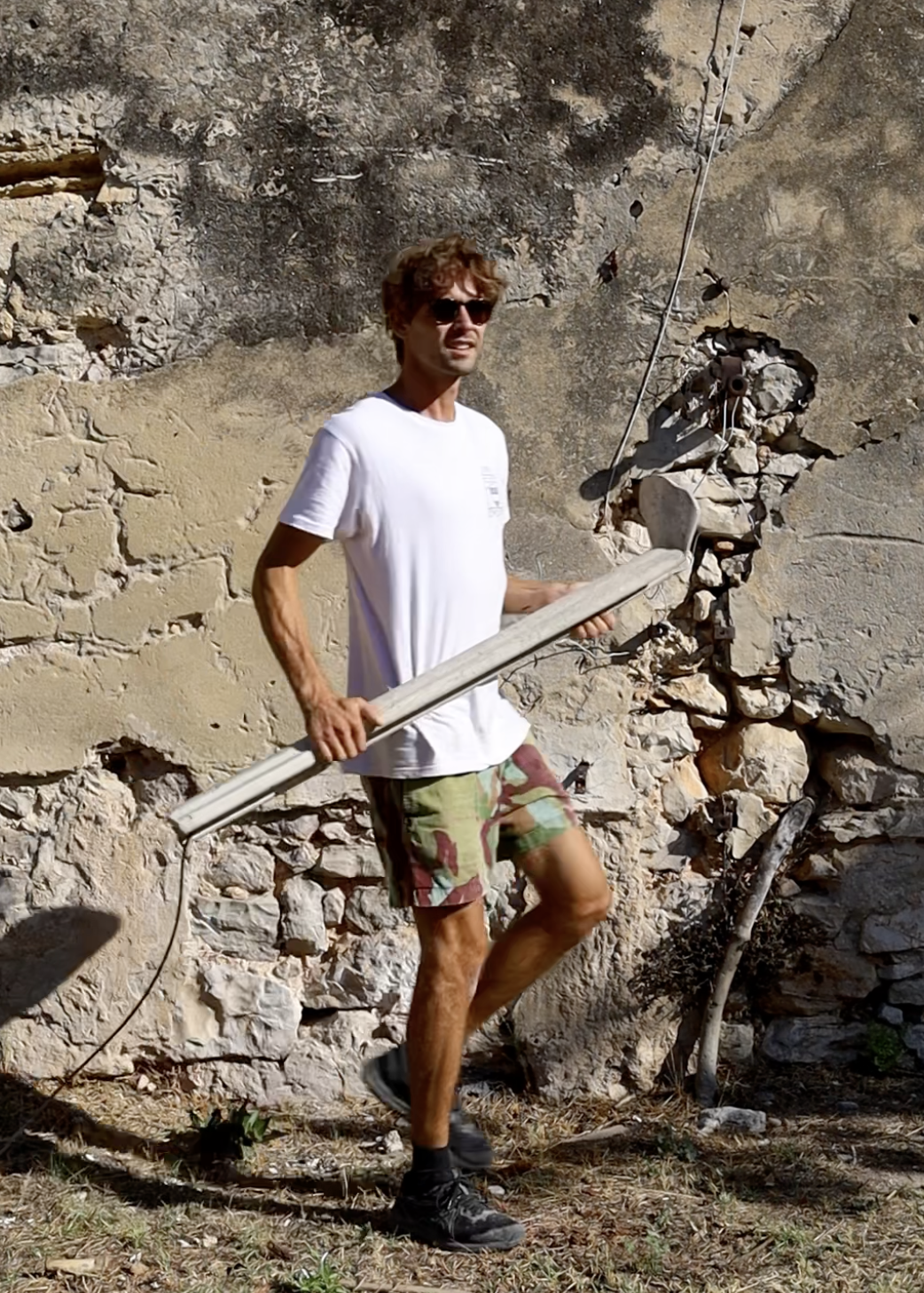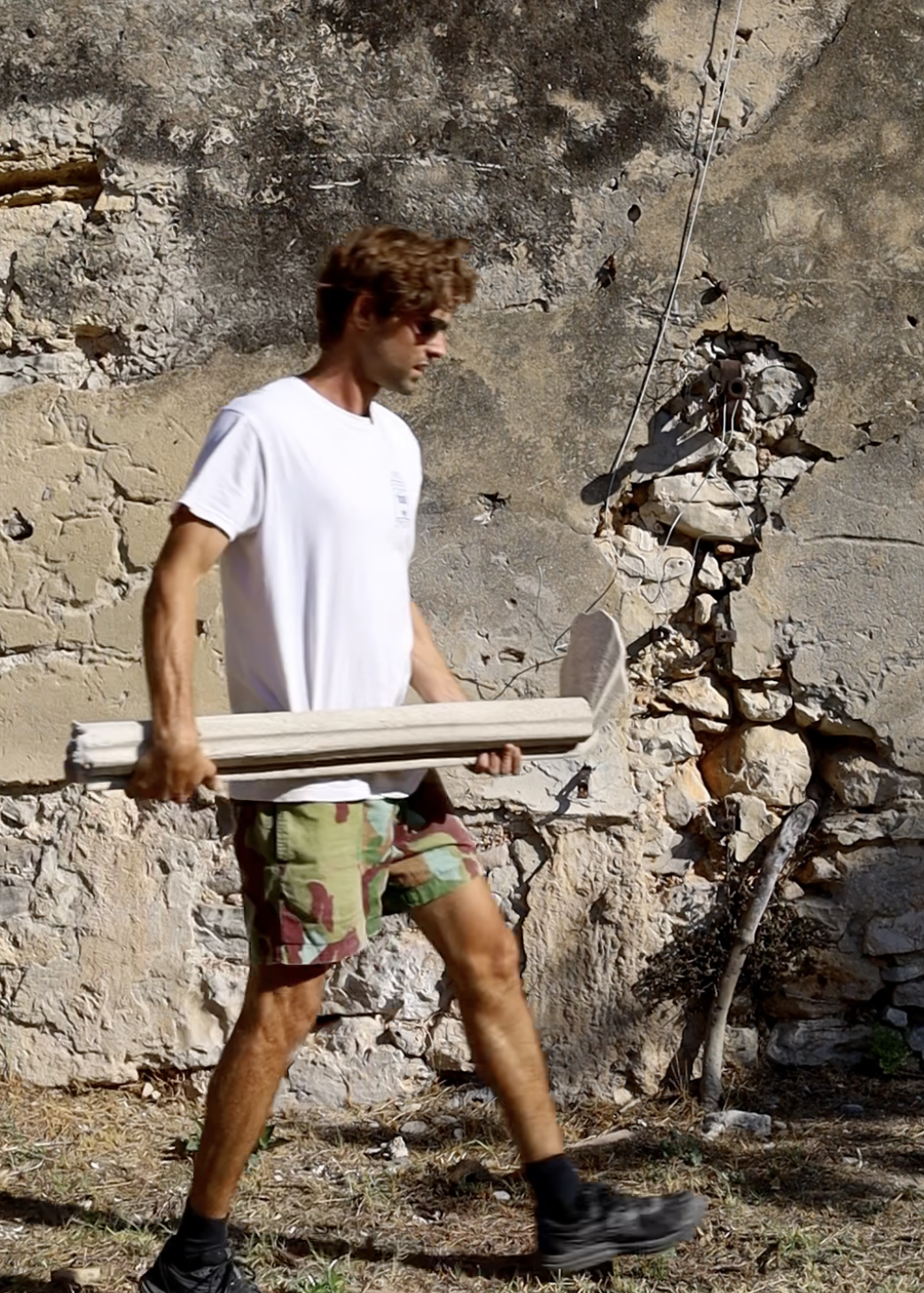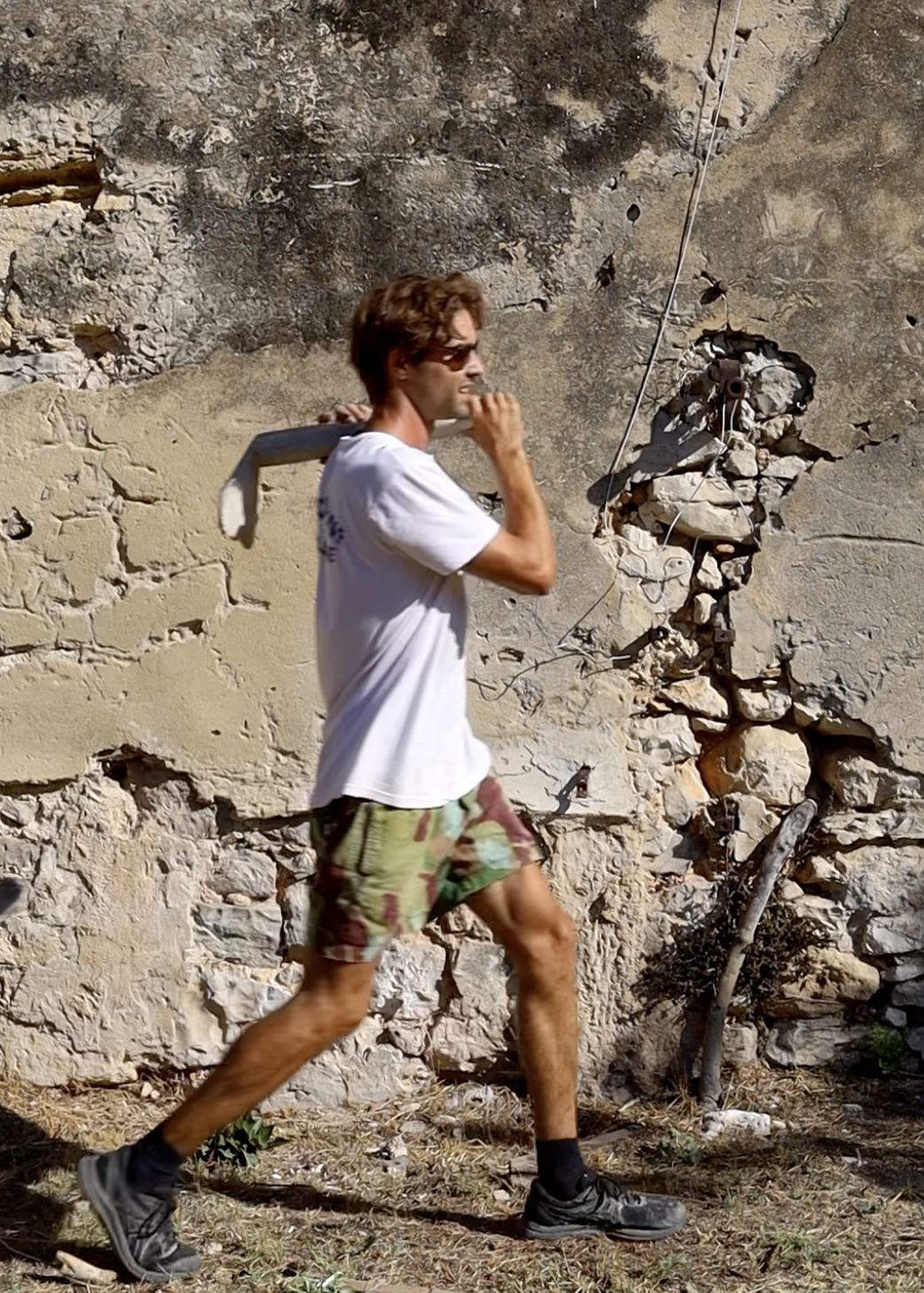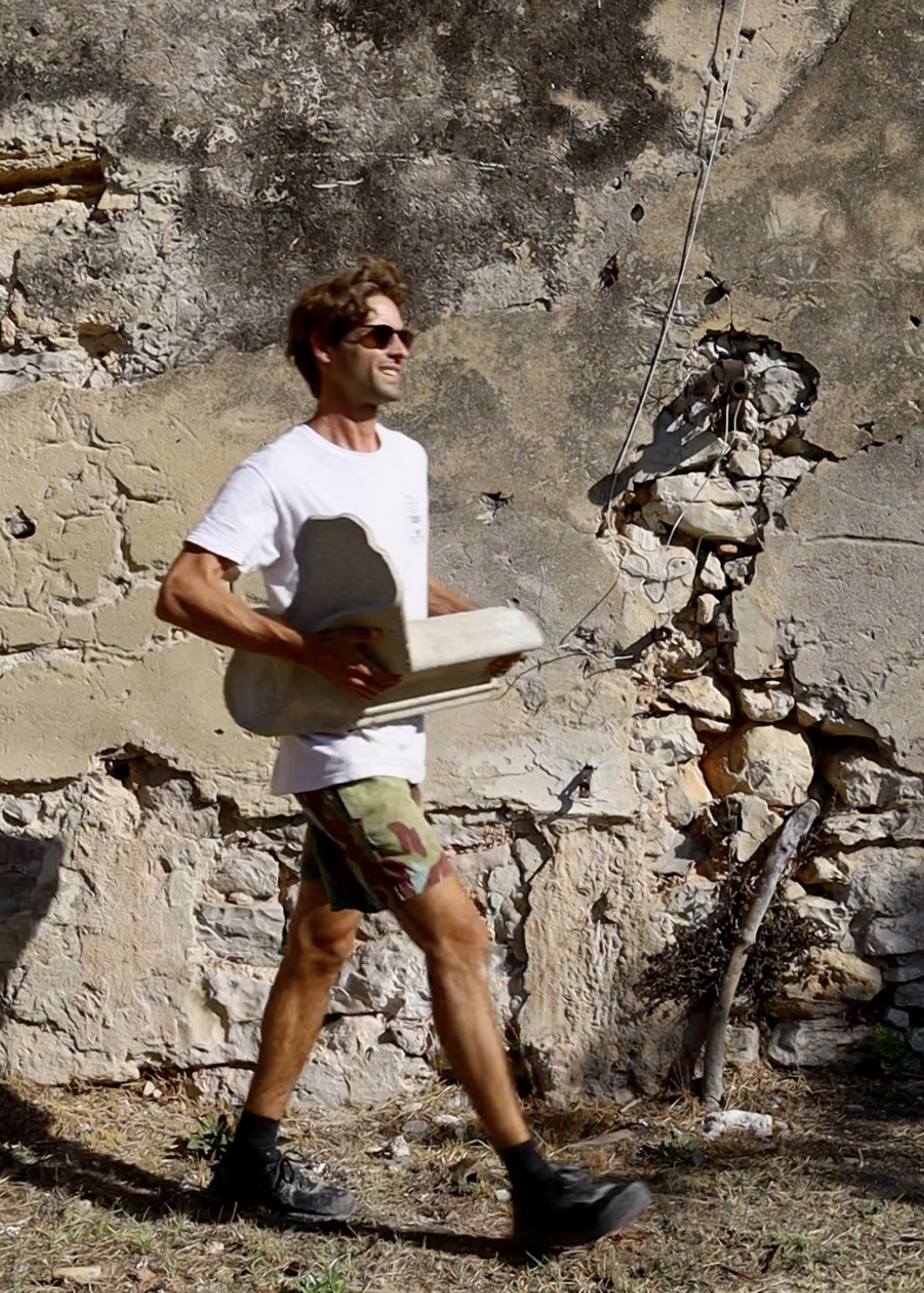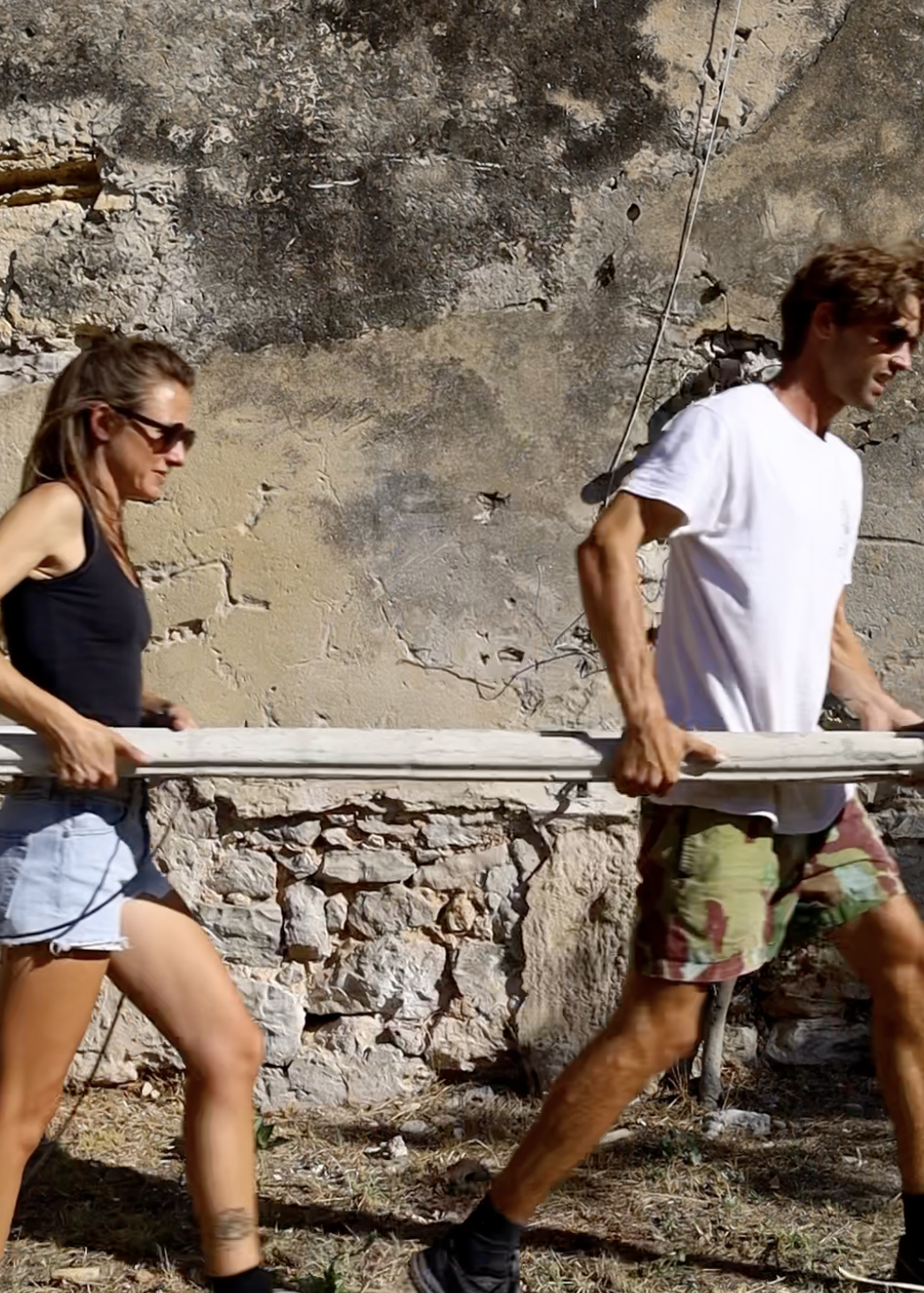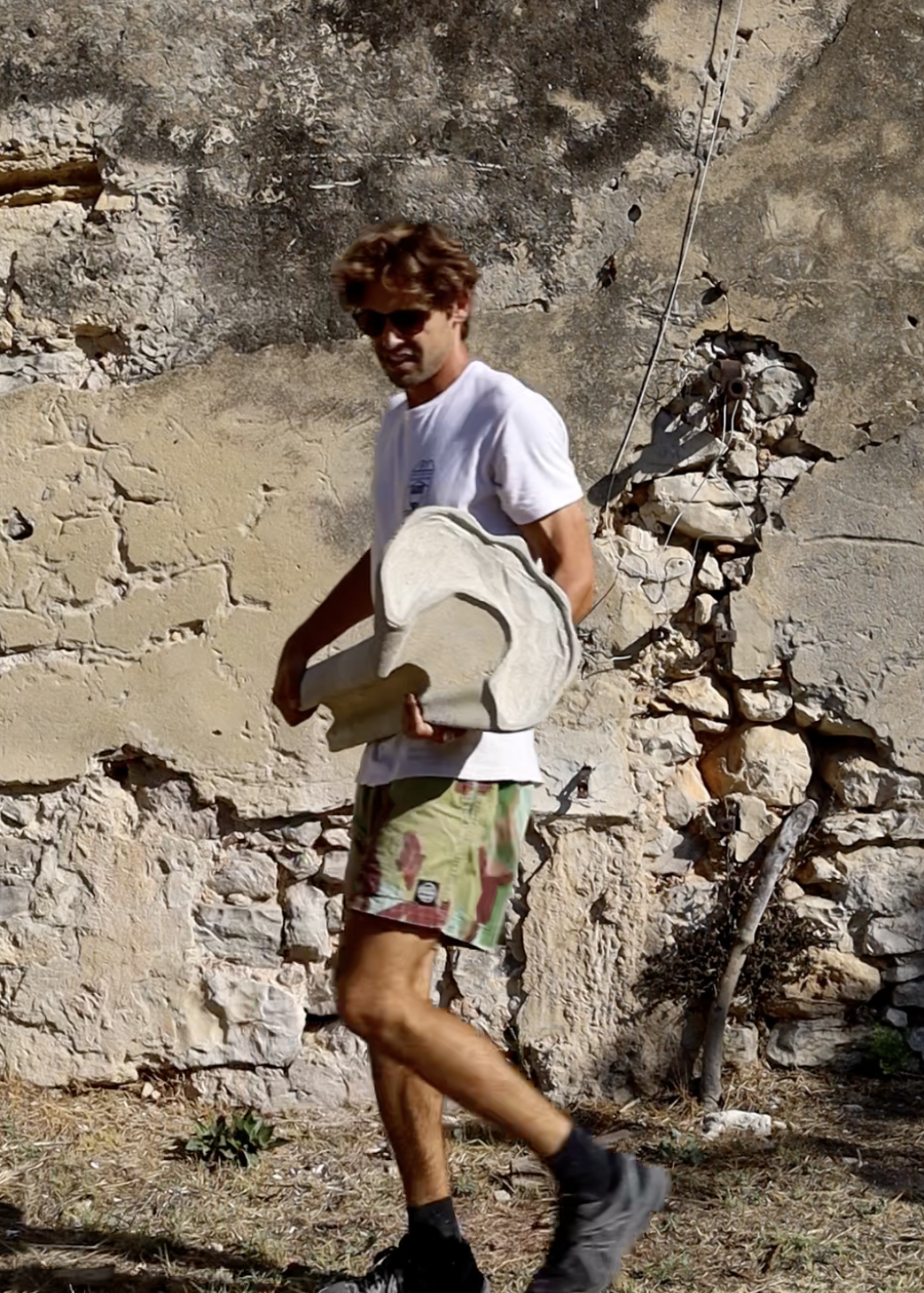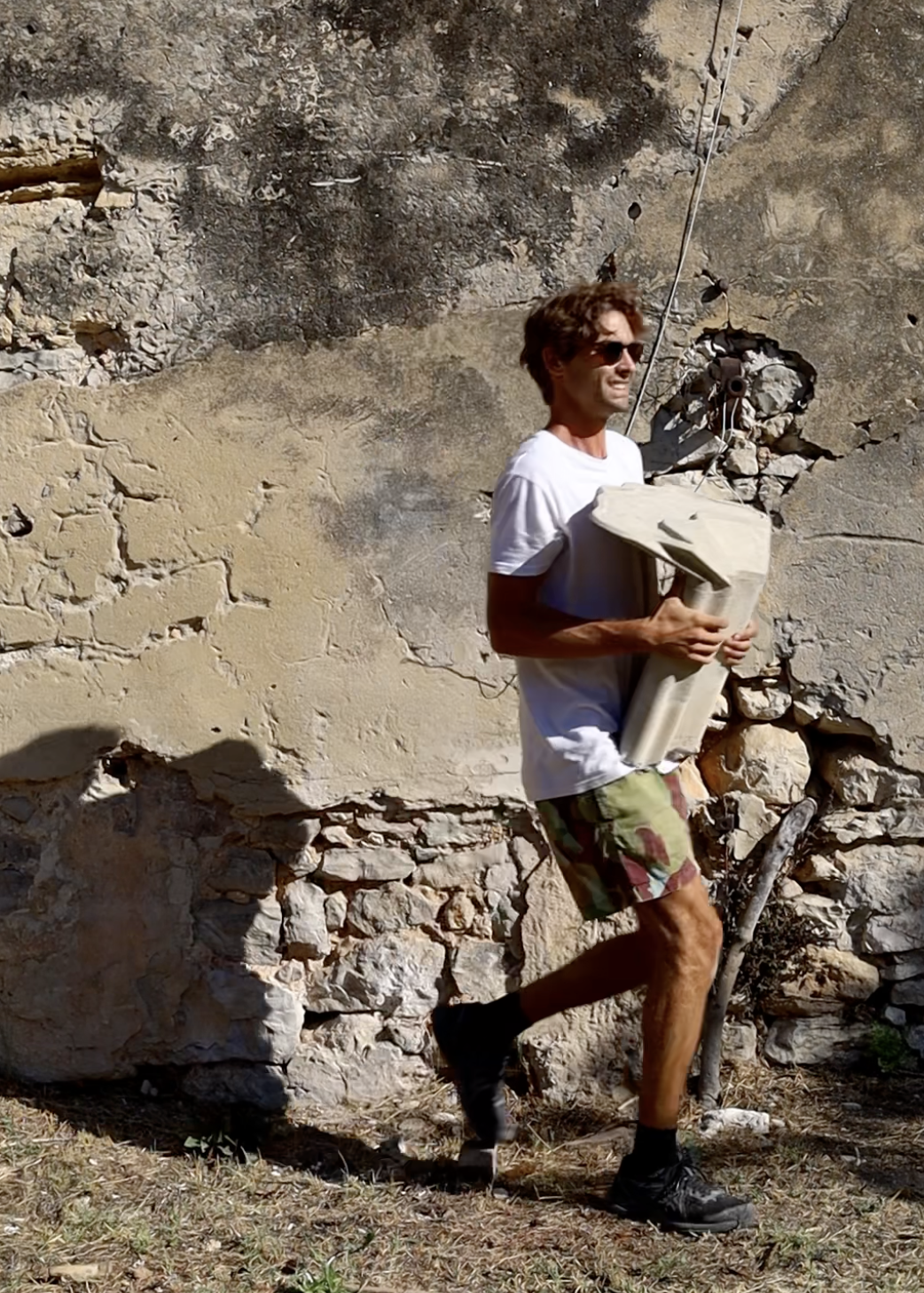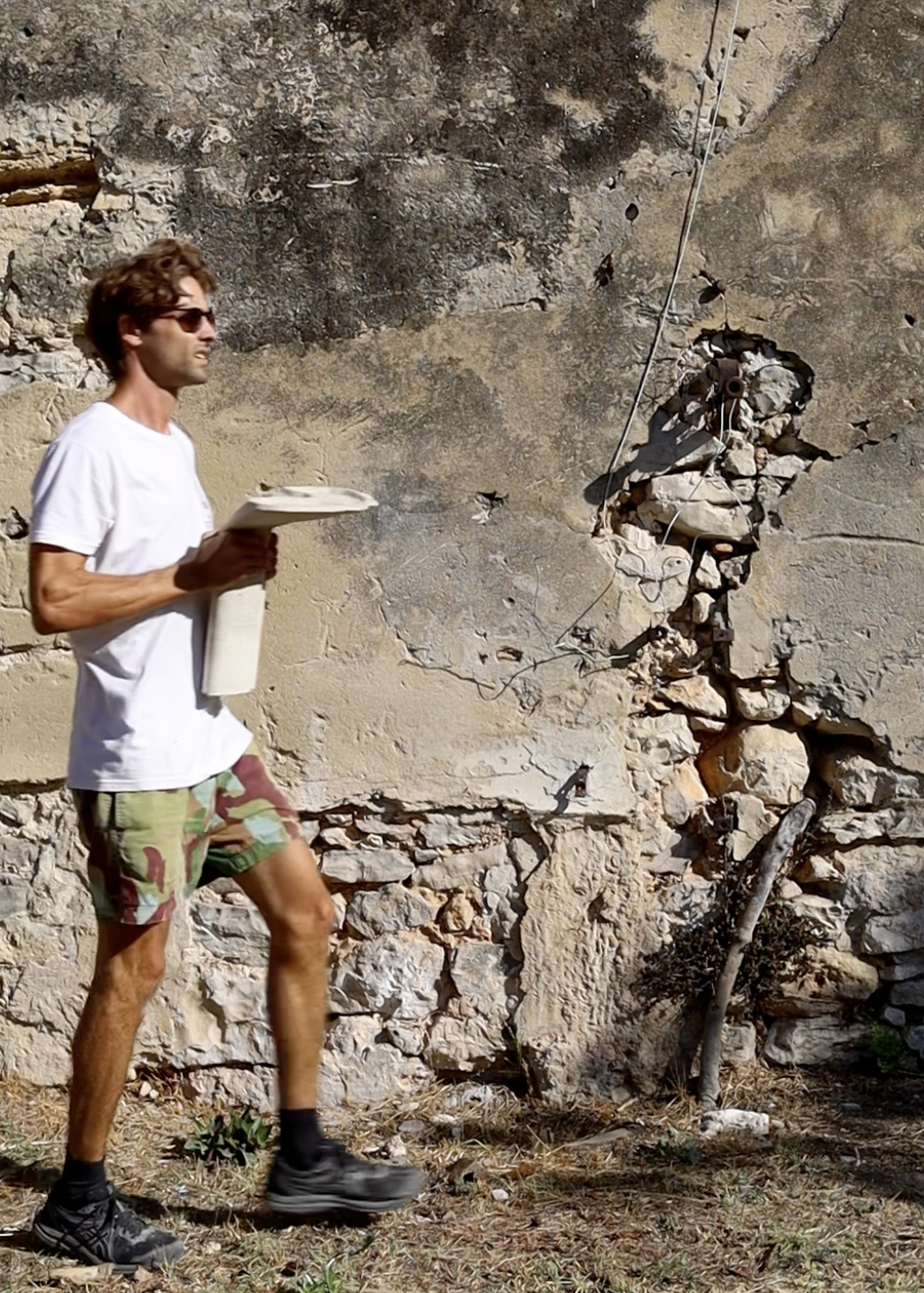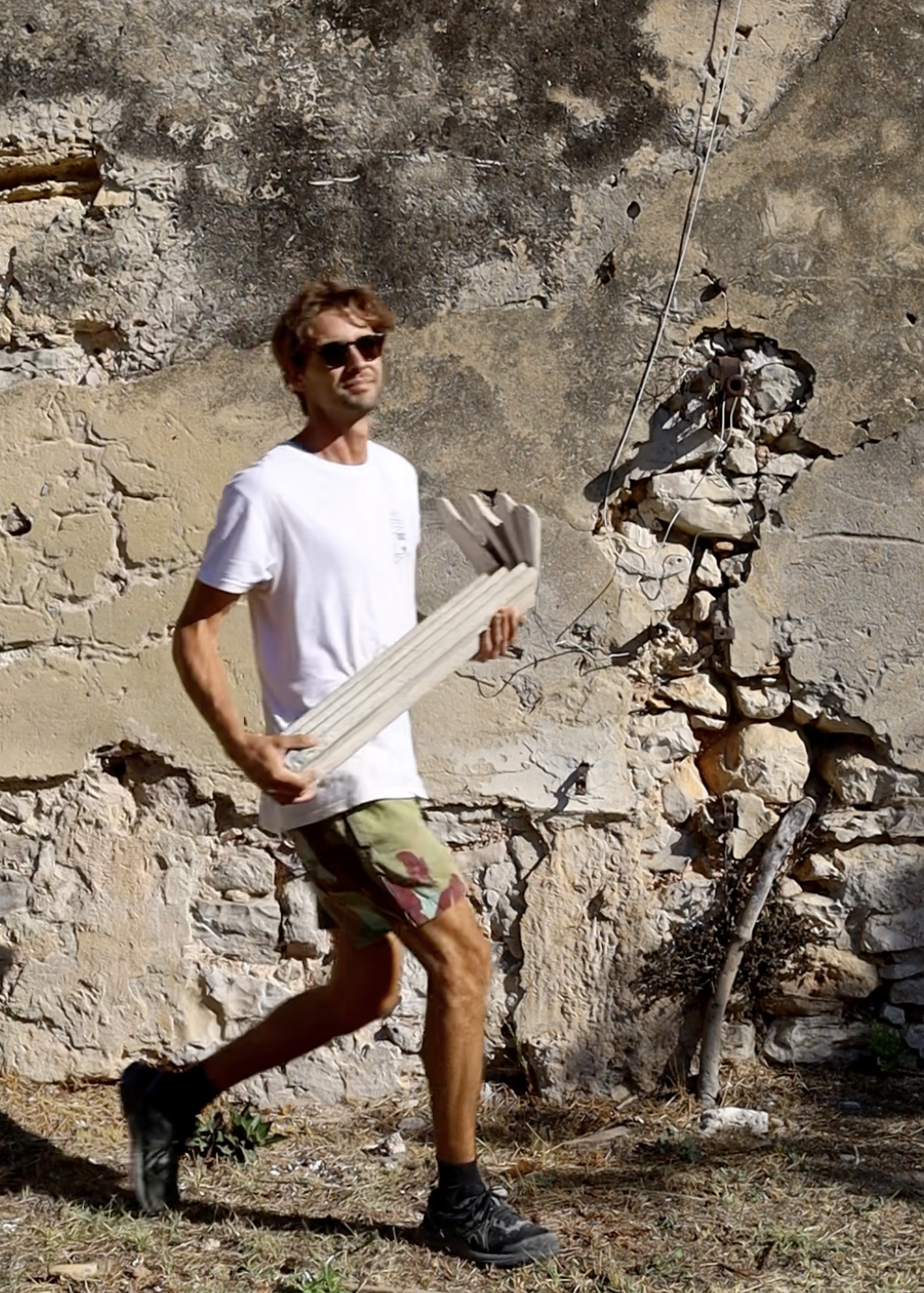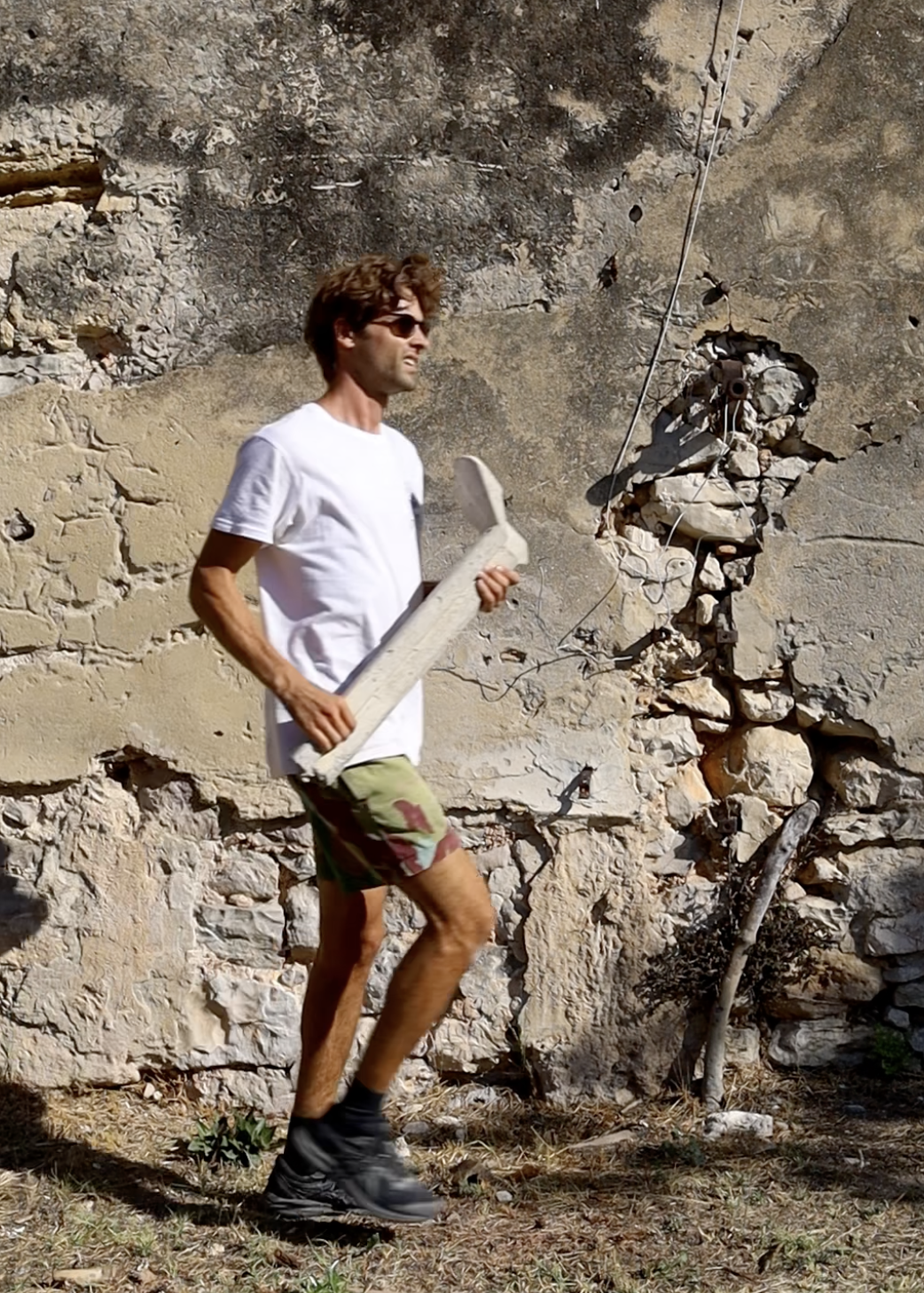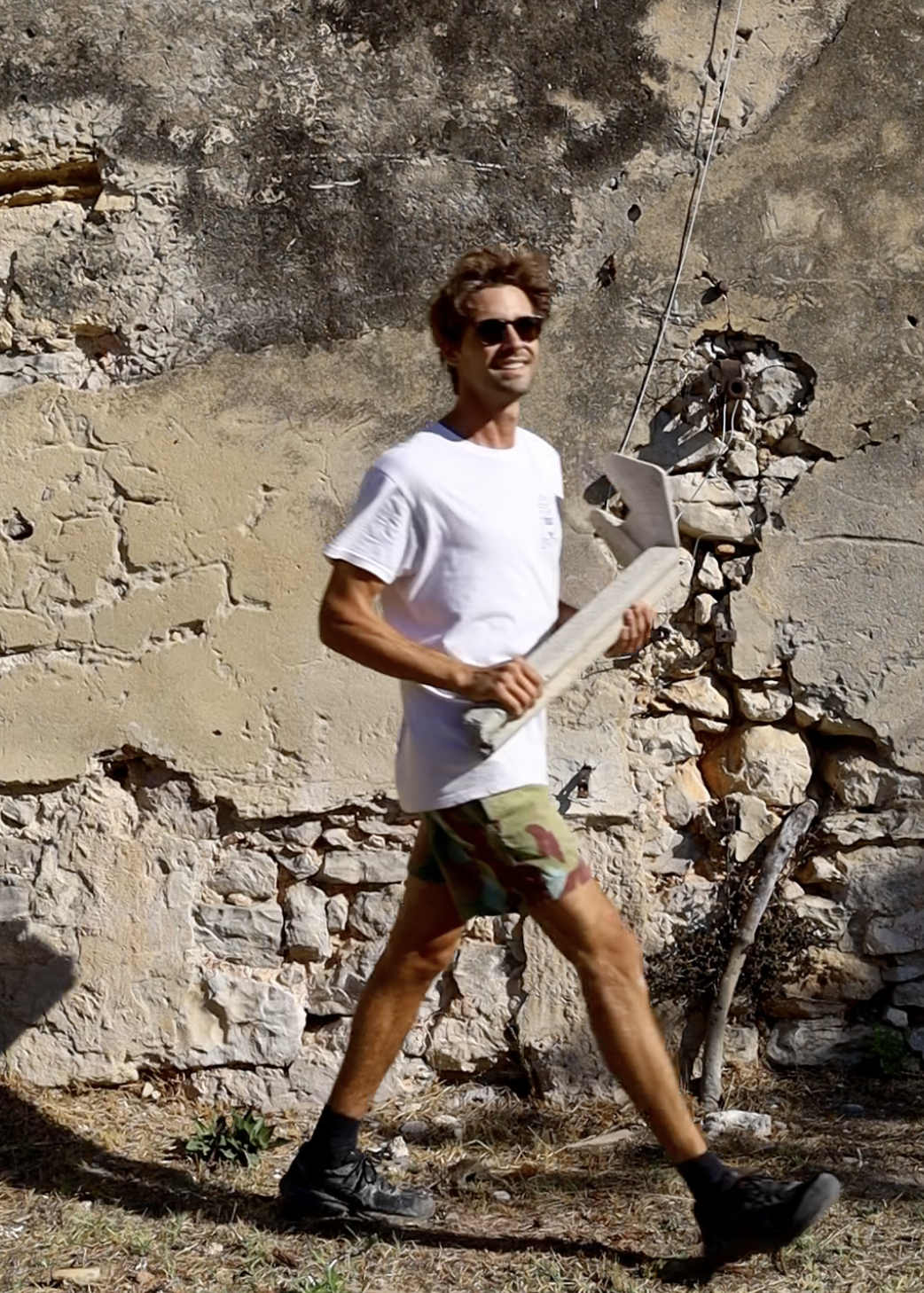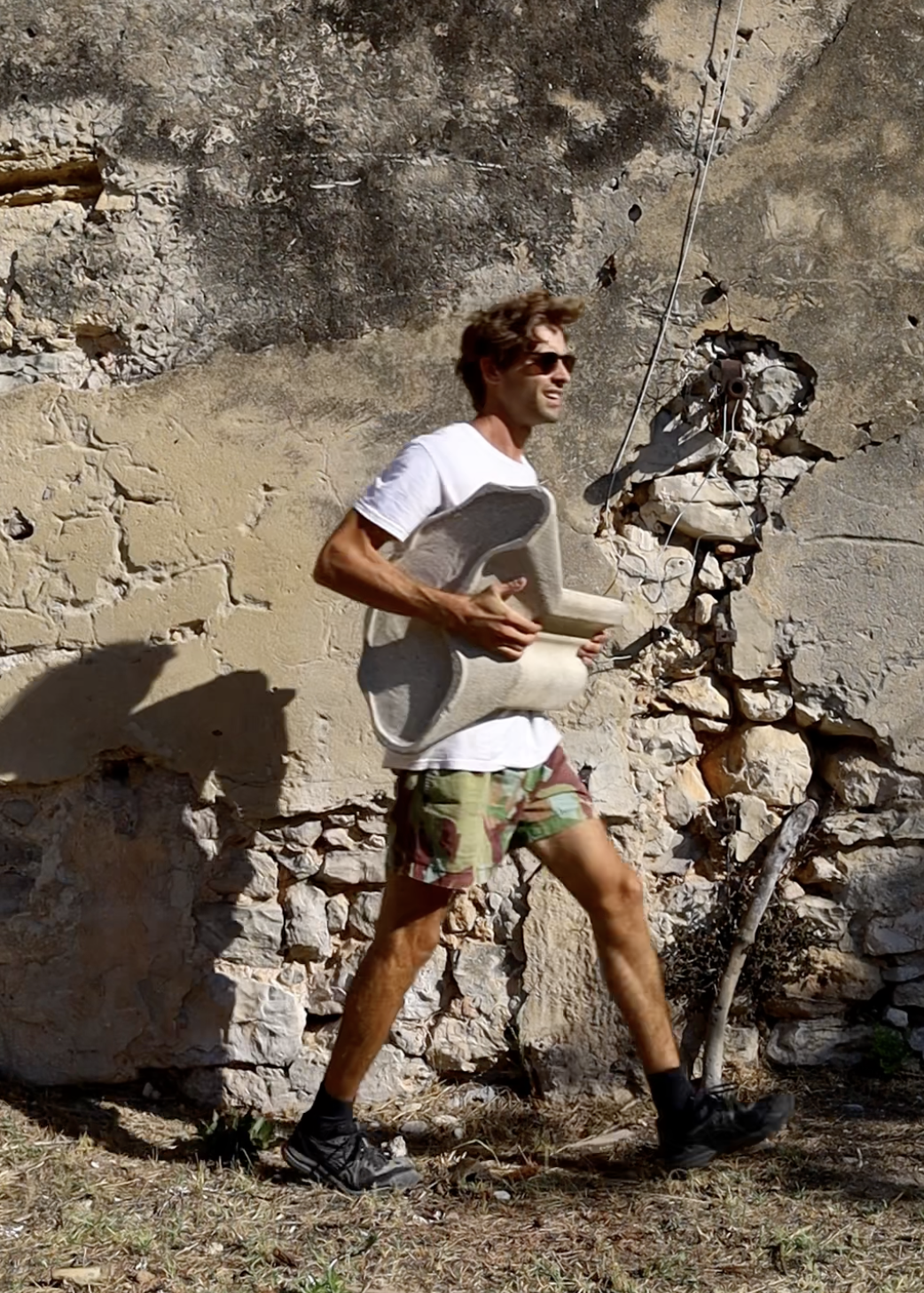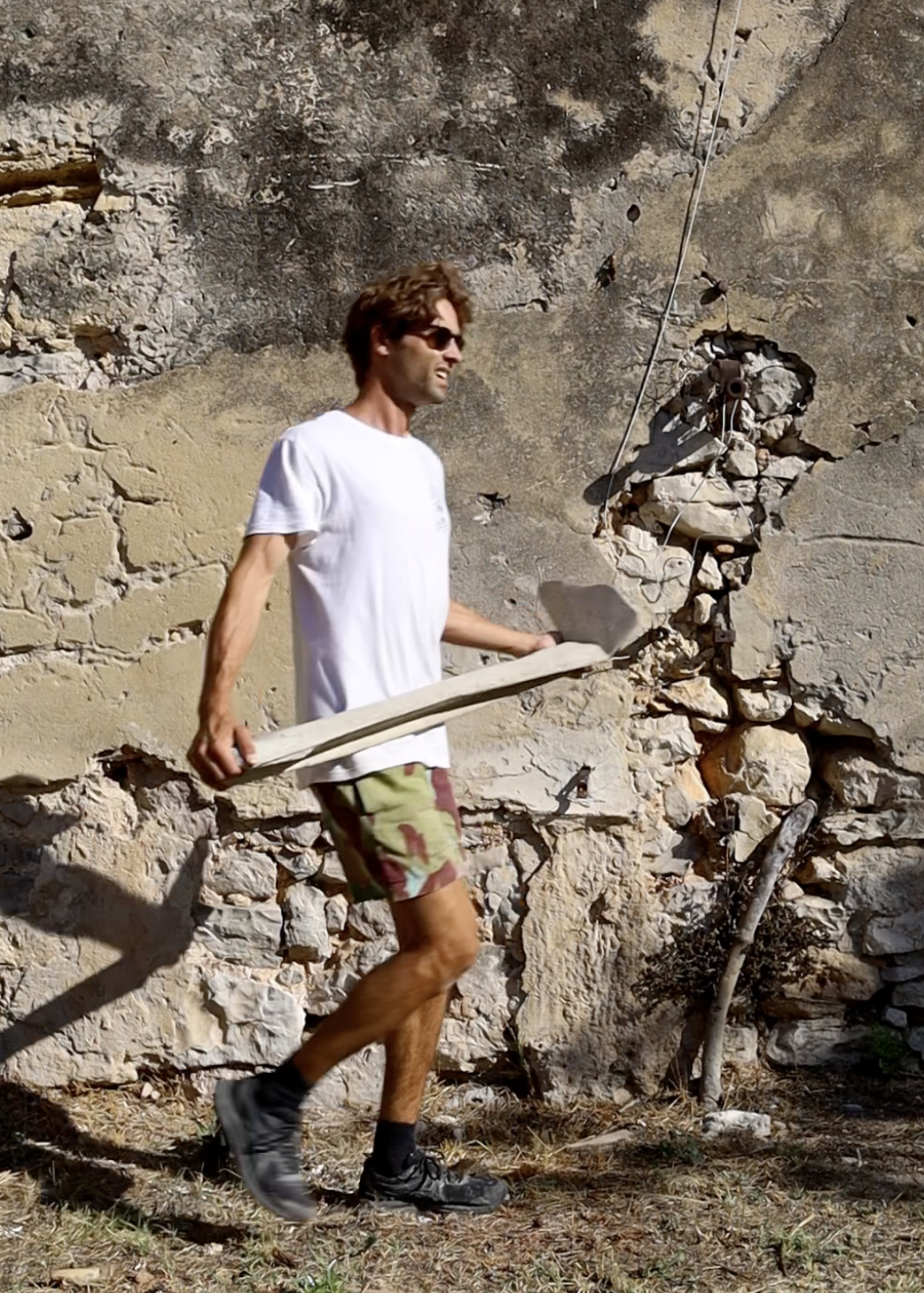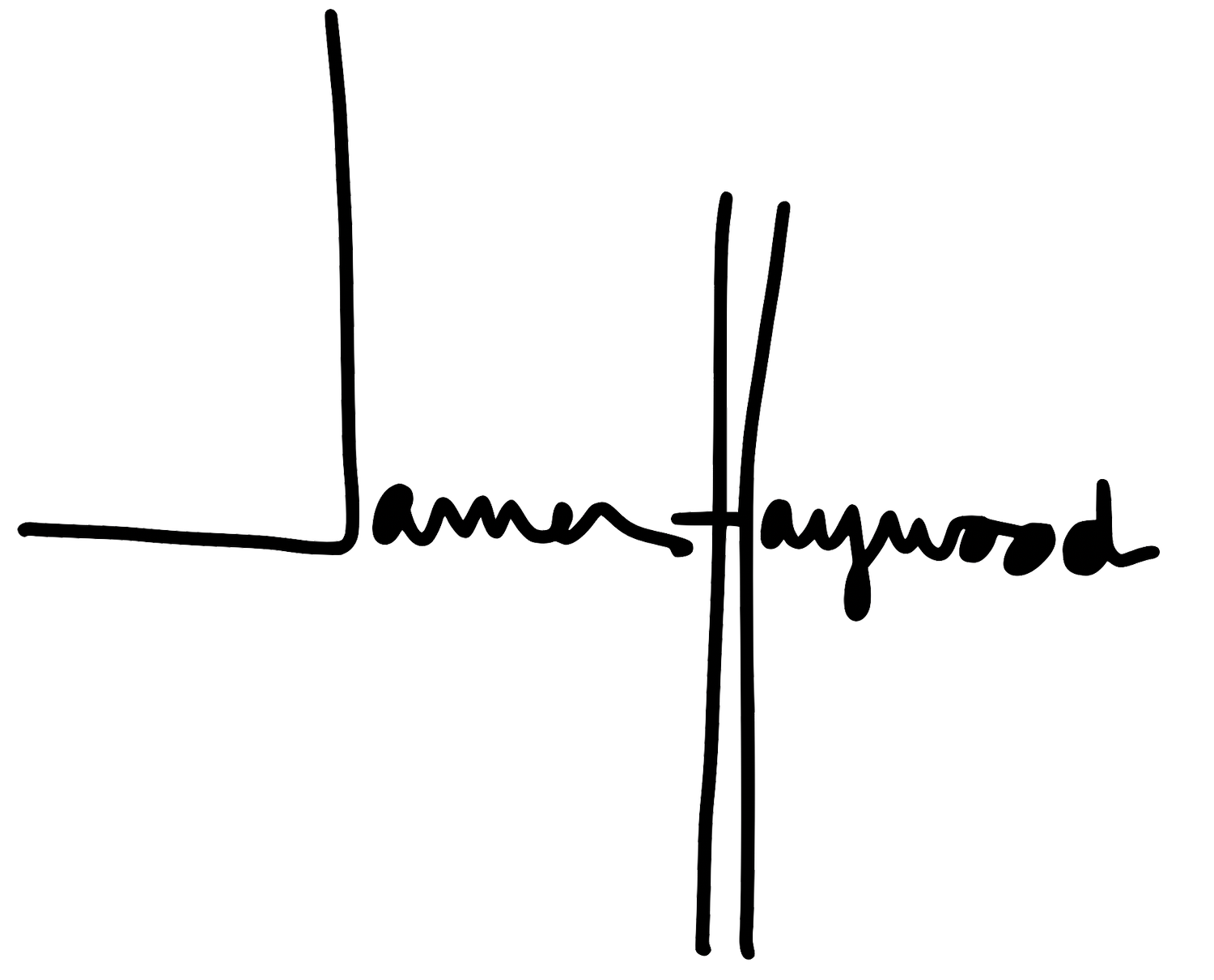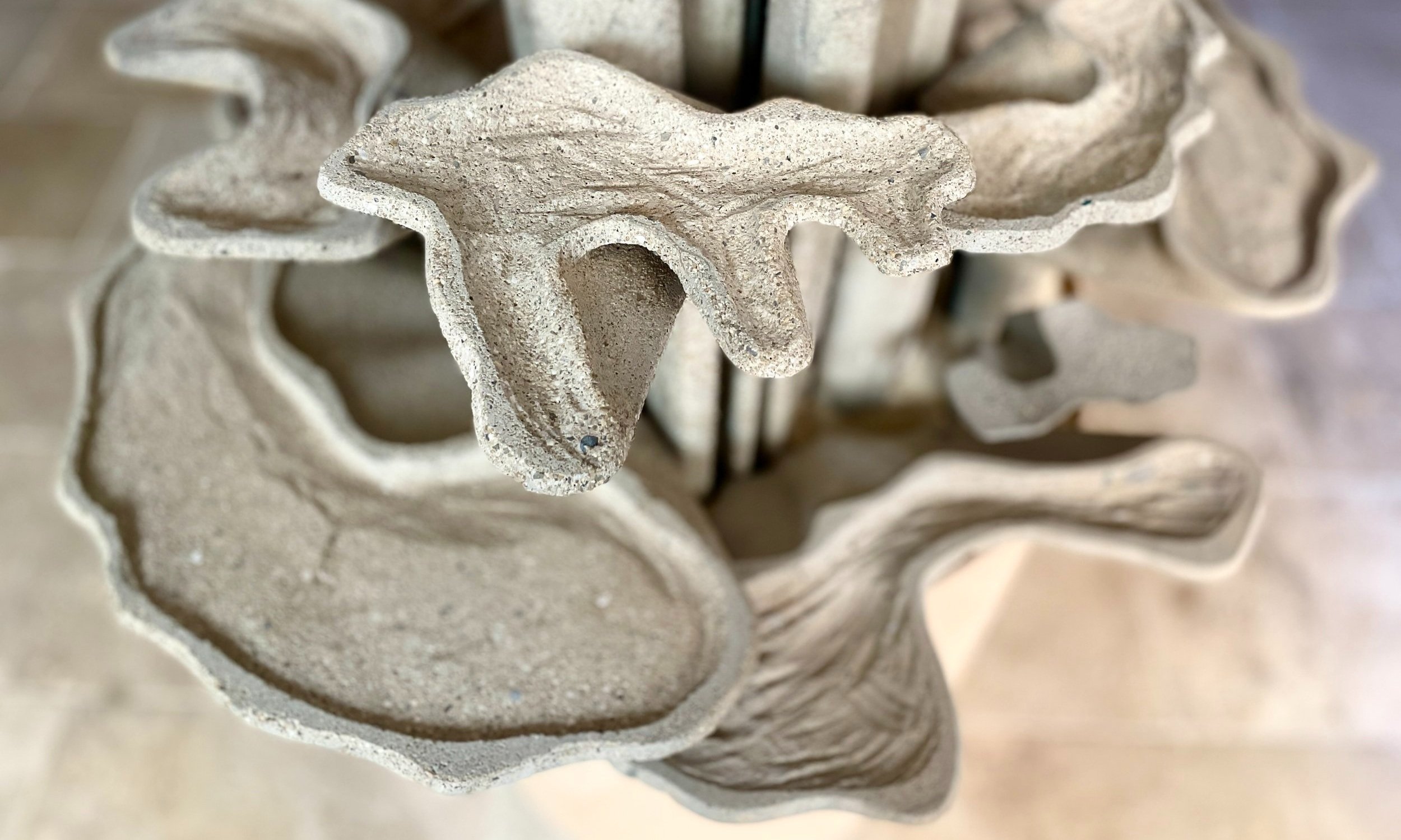
A symbol of reconciliation
Just like plastic, concrete is becoming a pariah, and for good reason—it accounts for 7 to 8% of global greenhouse gas emissions. However, it’s crucial not to throw the baby out with the bathwater. Concrete, much like bread, can be crafted using a variety of recipes.
Visually too, concrete is synonymous with harsh lines and rough textures, contributing to its anti-nature image.
La Cascadelle challenges this perception, serving as a reminder that humanity and nature can, and must, coexist harmoniously.
Aquarelle by Axel Champloy
The journey to bring this colossal piece to life spanned nine months, marked by challenges, inspirations, and countless hours of meticulous work, from designing each “flower” to crafting the moulds and assembling the final piece.
Now on exhibition in Hyères, the sculpture remains a work in progress, awaiting a new home where nature can fully take over and complete the transformation.
La Cascadelle is more than a fountain; it was designed as a refuge for local wildlife—a place where vegetation can take root, gradually transforming the sculpture into a living, evolving organism. Thus, over time, La Cascadelle will stand as a symbol of the imminent resurgence of symbiosis between humanity and nature.
The Journey
Initially, 150 “flowers” were drawn. Out of these 150, 20 were then chosen and virtually assembled into a bouquet. Then, each tower was individually crafted as a single piece, with a unique mould. The tallest tower stands at 185 cm, and the heaviest weighs 32 kg for a total of 200 kg.
The process of making "La Cascadelle" was as much about discovery as it was about creation. Moulding each flower individually allowed for experimentation with form and texture, ensuring that no two flowers are alike. The placement of these flowers was carefully considered, creating nooks and crannies that invite nature to inhabit the sculpture, turning it into a living refuge over time.








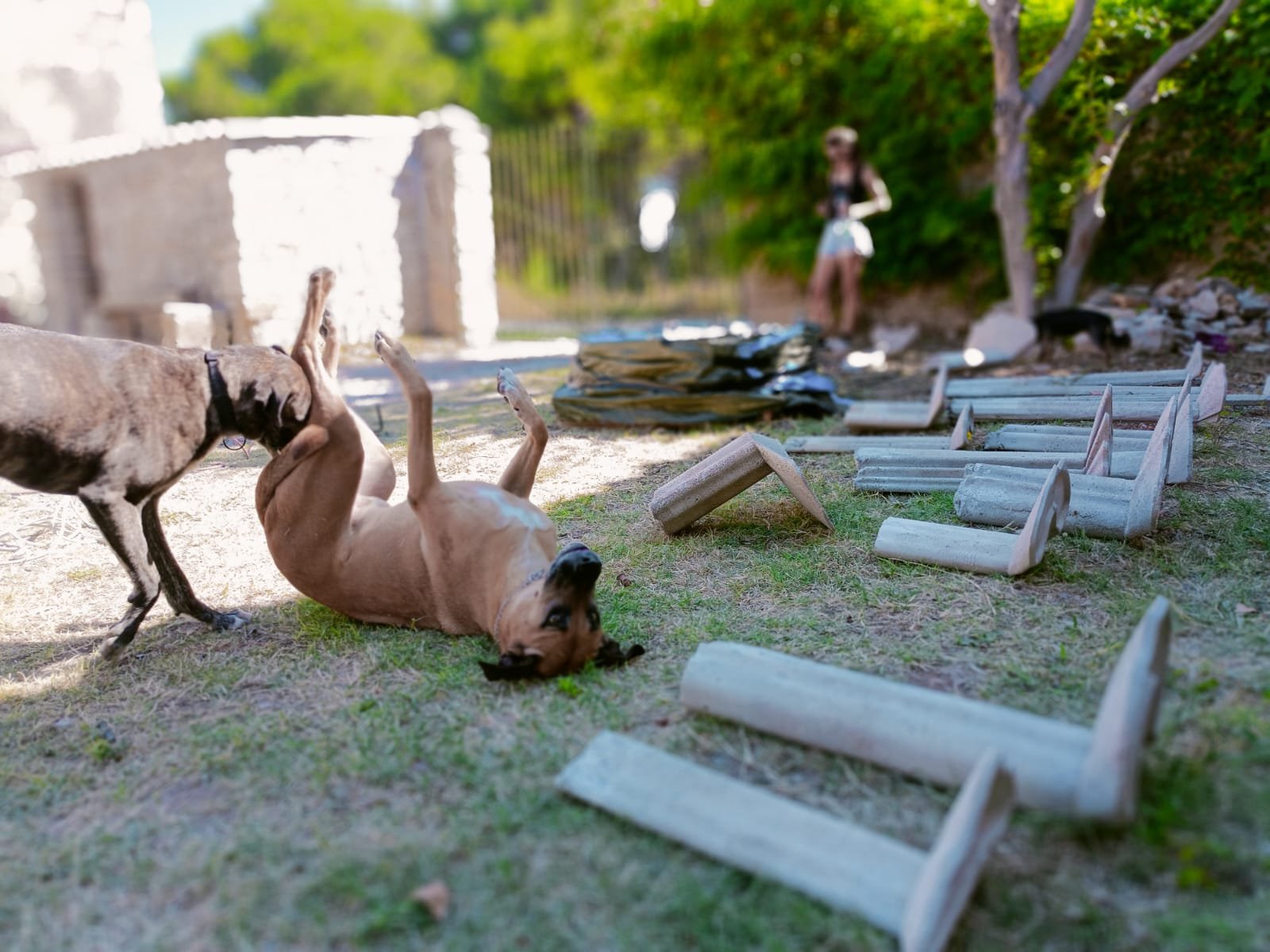
Materials of the Earth
The foundation of "La Cascadelle" lies in its carefully chosen materials: a blend of slag and oyster shell concrete. This combination was intentional, merging industrial and natural by-products to symbolise the potential for harmony between the human-made and natural worlds. The use of slag reduces CO2 emissions by up to 30%—not as much as some mineral resins, but it offers a practical, well-understood, and affordable alternative. As a by-product of diminishing industries, slag is becoming less available, particularly in France, making it an interim solution until cleaner, more sustainable options become more widely accessible.
A Call to Harmony
This fountain stands as a testament to the possibility of symbiosis between humans and nature. "La Cascadelle" invites us to reflect on our role within the natural world, challenging the notion that human progress must come at nature's expense. Instead, it calls for a return to a more balanced, respectful relationship with the environment.
